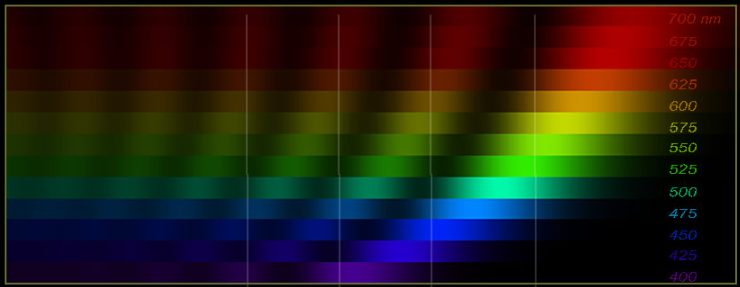OPOD - Rainbow Colours
OPOD - Rainbow Colors: A Spectacular Natural Phenomenon
Rainbows have long fascinated and mesmerized us with their vibrant and ethereal beauty. These stunning displays of colors in the sky have captivated the imagination of poets, artists, and scientists alike. In this article, we will delve into the intricacies of rainbow colors, exploring the science behind their formation and the mesmerizing spectrum they encompass.
The Primary and Secondary Rainbows: Separated by Alexanders Dark Band
When we gaze upon a rainbow, we often notice two distinct arcs of colors. The primary rainbow is the larger and more vivid of the two, while the secondary rainbow appears fainter and is positioned above the primary. Separating these two rainbows is a dark band known as Alexander's Dark Band. This phenomenon occurs due to the reflection, refraction, and dispersion of sunlight within raindrops.
The Infinite Gradation of Colors in a Rainbow
While there is an infinite gradation of colors across a rainbow, our eyes can perceive only a limited number of distinct colors. Our eyes possess three types of color sensors cones, which, when combined with our brain's processing capabilities, can discern over 2 million different color combinations. This vast range exceeds the traditional rainbow colors of red, orange, yellow, green, blue, indigo, and violet.
Overlapping Colors: The Complexity of Rainbow Hues
Contrary to popular belief, rainbow colors are not single-wavelength spectral colors like those produced by a prism. When sunlight passes through raindrops, it disperses and creates a spectrum of colors that overlap. Each specific angle of the rainbow corresponds to a main spectral color overlapped by weaker mixtures of other colors with longer wavelengths. For example, rainbow green consists of various shades of green along with progressively weaker contributions of yellow, orange, and red.
The Multitude of Colors in a Rainbow
To truly appreciate the intricate colors within a rainbow, we can examine a simulated rainbow for raindrop diameters of 0.7mm. In reality, a rainbow consists of thousands of wavelengths, but for illustrative purposes, we will consider 13 colors. The composite bow intensities are derived from the Airy theory calculation, weighted by the solar spectral intensity distribution at Earth's surface, and convoluted over the angular diameter of the sun's disk. This simulation reveals that green, for instance, is a blend of various shades of green, with hints of yellow, red, and even a trace of blue.
Supernumeraries: Elusive Bands of Colors
Supernumeraries are additional bands of colors that sometimes appear within a rainbow. These bands are most pronounced when observed in monochromatic light. However, in white light, they often become washed out due to severe overlapping. Experimenting with monochromatic light on a rainbow can reveal these elusive and captivating supernumeraries.
Exploring the Intricacies of Rainbow Colors
Rainbows continue to inspire awe and curiosity as we uncover the complexities behind their vibrant colors. By understanding the dispersion and overlapping of sunlight within raindrops, we gain insight into the intricate spectrum of hues that compose a rainbow. From the primary and secondary rainbows to the subtle nuances within each color, these natural wonders never cease to amaze us with their mesmerizing beauty.
Conclusion
Rainbow colors are not merely a simple sequence of spectral hues but a complex interplay of overlapping colors that create an infinite gradation of shades. Our eyes, aided by our brain's processing capabilities, can perceive an astounding number of color combinations within a rainbow. As we delve deeper into the science behind these captivating displays, we gain a greater appreciation for the intricate beauty that nature offers us in the form of rainbows. So, the next time you witness a rainbow gracing the sky, take a moment to marvel at the wondrous palette of colors that nature has painted for us.

A glorious scene imaged by atmospheric optics expert Alistair Fraser (blog) in British Columbia, Canada.
The primary and secondary rainbows are separated by Alexanders Dark Band. The sky is characteristically bright inside the primary. Wave tilted water prevents the reflected primary and primary meeting at the horizon.
©Alistair Fraser, shown with permission

How many colours are there in the rainbow? An infinite number because there is a continuous gradation of colour (strictly, hue saturation and value or their equivalent) across it from red to violet.
How many colours can we actually see in a rainbow? Our eyes have three types of colour sensor cones and collectively with brain processing they can distinguish some 2,000,000 or more different colour combinations. Rather more than the traditional rainbow colours of red – orange – yellow, green – blue – indigo – violet !
Rainbow colours are not single wavelength spectral colours. Unlike a prism, a raindrop disperses sunlight such that colours overlap. Each particular angle of the rainbow has a main spectral colour that is overlapped by a weaker mixture of all other colours of longer wavelength. Thus rainbow green is greens plus progressively weaker contributions of yellows, oranges and reds.

A simulated rainbow for drops 0.7mm diameter.
The final bow is the sum of contributions from all wavelengths - thousands in the Airy theory calculation that generated it rather than the 13 shown here. Composite bow intensities were weighted by the solar spectral intensity distribution at Earth's surface and were then convoluted over the angular diameter of the sun's disk.
Green is a mixture of greens plus some yellow and some reds - there is even a trace of blue there.
Supernumeraries are much higher contrast in monochromatic light - try it on a rainbow - but severe overlapping washes them out in white light.
Note: this article has been automatically converted from the old site and may not appear as intended. You can find the original article here.
Reference Atmospheric Optics
If you use any of the definitions, information, or data presented on Atmospheric Optics, please copy the link or reference below to properly credit us as the reference source. Thank you!
-
<a href="https://atoptics.co.uk/blog/opod-rainbow-colours/">OPOD - Rainbow Colours</a>
-
"OPOD - Rainbow Colours". Atmospheric Optics. Accessed on December 22, 2024. https://atoptics.co.uk/blog/opod-rainbow-colours/.
-
"OPOD - Rainbow Colours". Atmospheric Optics, https://atoptics.co.uk/blog/opod-rainbow-colours/. Accessed 22 December, 2024
-
OPOD - Rainbow Colours. Atmospheric Optics. Retrieved from https://atoptics.co.uk/blog/opod-rainbow-colours/.